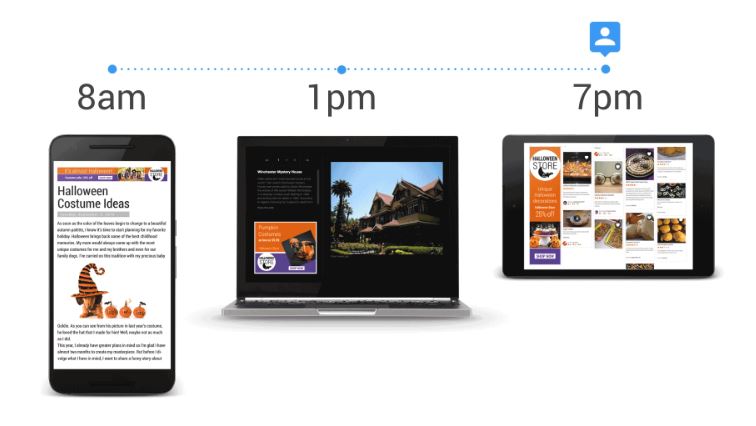When you’re a recruiter, you need all the help you can get to attract the right candidates, especially when you’re hiring in high volumes or recruiting for tough-to-fill roles. Sometimes, it means you need to get a little creative with advertising your job openings.
This is where programmatic job advertising comes into play.
Read on to find out what this is and how it can help you recruit top-quality talent.
What’s in?
- What’s programmatic job advertising?
- The benefits of programmatic job advertising
- What’s the future of programmatic job advertising?
Let’s dive in!
Like what you see?
Don’t miss out. Subscribe to our quarterly digest to get the latest TA and TM resources delivered right to your inbox.
What’s programmatic job advertising?
In short, programmatic job advertising is the purchasing, publishing, and optimizing of job ads by electronic software rather than actual people. These ads appear to prospects all over the internet. Yes, that’s right — with programmatic job advertising, the whole web’s at your disposal, rather than just the popular job boards that are inundated with competing listings.
This is how it works:
- You find a software that provides an automated system for purchasing space to advertise your job openings.
- You then specify the details of your target demographic (which are known as ‘rules’).
- List how many prospects you want to reach.
Then, voila, your programmatic job advertising solution should handle everything else from here!
Yes, it really is as simple as that.

Programmatic job advertising currently represents about
25%
of recruitment advertising.
Source: HR Dive
Currently, programmatic job advertising spending is about $350 million and this number is projected to grow.
What happens next?
Programmatic advertising harnesses both the browsing data of your ideal job seekers as well as sophisticated algorithms to show them the right ad, at the best time and place, based on the likelihood they’ll positively engage with the listing.
Needless to say, you want your ads to be more accessible and efficient than ever before. So, how’s that achieved?
Programmatic job advertising tech harnesses the power of A/B testing and artificial intelligence (AI).
What’s A/B testing? Also known as split testing, it is a process where you compare two or more variants of your ad to see which performs the best.
What’s AI? In short, artificial intelligence is tech that can perform jobs that would typically require a human to do. So, you can automate a whole array of tasks and save a ton of time on things you’d otherwise have to do manually.
All in all, by using AI and A/B testing to launch and refine your ads displayed across the web, programmatic job advertising software ensures a steady improvement of the overall quality of your job applicants.
The benefits of programmatic job advertising
Programmatic job advertising’s two main benefits are:
- It empowers the advertiser (you) to laser target their ideal demographic
- It prevents the advertiser from accidentally overspending their budget on clicks
However, you’ll be pleased to hear, there are tons of other advantages to using programmatic job advertising, which we’ll now discuss in a little more detail.
1. Expanding your reach
Programmatic job advertising is a great method for expanding the number of potential candidates you reach. With just a few clicks, you can advertise your job openings across numerous publishing networks — some of which you might never have heard of before.
After all, the best-quality job seekers don’t always hang out on major job boards, However, a programmatic job advertising tool transforms the entire internet into a ‘help needed’ poster. It’s never been easier to utilize consumer and niche sites that you probably wouldn’t have stumbled across on your own or even thought to advertise on.
OnRecruit is an excellent example of a programmatic job advertising platform which does precisely that. They track the entire journey of your candidates, so you can reverse engineer it and perfect your recruitment marketing strategies. Within minutes you can automate your job advertisements to appear in search engines, ad exchanges, job boards, etc., to attract the optimum number of candidates to the right kind of jobs.

Programmatic job advertising platforms often have over
100%
publishers in their networks.
These are often non-traditional websites for job advertising, helping you capture the attention of passive job seekers as well.
2. Getting actionable insights
With programmatic job advertising, you’ll get useful insights into how your ads actually perform.
Gathering and analyzing this data is essential.
These metrics highlight which sites reap the best rewards, so with actionable info at your disposal, you’ll be in a better position to optimize your campaigns effectively.
If sophisticated, real-time analytics is an essential feature for your programmatic job advertising solution, give Appcast a look. This software uses predictive analytics, real-time data, as well as programmatic bidding to optimize your job ads. When all these moving pieces work together, you should enjoy a higher volume of top-quality candidates at a much lower cost.
3. Saving money
Speaking of lower costs, eking out your limited budget to cover all your vacant jobs can be a daunting task. This is where dynamic budget allocation (also known as bidding) comes to the rescue.
This helps to ensure you pay for ads that actually provide tangible results as well as the highest possible ROI. In fact, by utilizing a programmatic job advertising solution, you can reduce your cost-per-applicant by over 30%. Some platforms even boast their customers experiencing a 70% reduction!
Not to mention that on average, 6% of your ‘open job’ ads generate more than 50% of the applications you receive. So, if you’re purchasing ad space on a ‘cost-per-click’ basis, your ‘easier to fill’ jobs will typically eat into the majority of your budget. This makes finding talented candidates for harder-to-fill positions all the more challenging.
Luckily, programmatic job advertising optimizes posts to prioritize the listings which haven’t received many applications. Conversely, the software automatically puts less emphasis on promoting job listings which already have a steady candidate flow.

Programmatic job advertising platforms can help you push ROI by up to
90%
Source: HR Technologist
Programmatic job advertising can help you optimize your overall recruitment budget.
4. Targeting ideal candidates
With programmatic job advertising, you can laser target the candidates who fit the exact profile you’re looking for. Consequently, you’re more likely to attract and engage with higher-quality applicants.
It stands to reason that, when you show relevant content to job seekers who actually want to engage with your advertisement, you’re more likely to provide them with a meaningful experience, which encourages an interest in what you’re offering.
The stats speak for themselves; programmatic job advertising sees an 8% boost in candidates reaching the final stages of hiring, in comparison to prospects who applied through traditional online job boards. This further highlights the colossal difference that programmatic job advertising makes to the overall standard of candidates you attract.
Joveo is another great example of a programmatic recruitment advertising platform. They excel at targeting ideal candidates by embracing machine learning to connect with them.
How AI & recruitment technology is changing recruiting experience
Find out how tech has helped other companies grow by enhancing both the recruiters’ and candidates’ experience!
5. Strengthening your employer brand
As you probably already know, different messaging will resonate with different groups of people. In your recruitment efforts, you might want to target graduates-to-be for entry-level roles but also showcase your company to more senior candidates. However, each of them might be interested in seeing different aspects of your company.
Luckily, programmatic job advertising allows you to publish numerous ads phrased differently to one another — at the same time. You can create multiple messages that highlight diverse facets of your company, its values, and culture. As such, all your relevant audiences will get ads that appeal directly to them, which helps to raise employer brand awareness and results in a stronger brand.

Companies with an employer brand stronger than their competitors see a
43%
decrease in the cost per hire on average.
Source: Linkedin
Not only do 75% of candidates consider your employer brand before even applying for a job, they also compare it to your competitors. A strong employer brand makes your hiring easier and cheaper.
6. Improving candidate experience
Showing your potential candidates what they want to see isn’t beneficial only to you, of course. Because you’re delivering meaningful and relevant content to them, their candidate experience dramatically improves as well.
You start building your relationships with the candidates before they even apply and they learn what they want to know about your company right from the start and on platforms that they like using.
And what happens once the candidate applies?
Some programmatic job advertising providers will help you make sure they will stop seeing your ads.
7. Retargeting potential applicants
Some programmatic job advertising providers allow you to retarget candidates who’ve already visited your ad but didn’t apply for the role.
Re-targeting means the potential applicant will see your job ad again when they browse the web long after they click off your listing.
Retargeting these prospects often prevents losing out on top-quality candidates that otherwise might have fallen by the wayside.
You should note: Some solutions even enable cross-device retargeting. So, it doesn’t matter what device job seekers use to access your ad, you’ll still be able to retarget them — how clever is that?

Cross-device retargeting helps you reach your candidates regardless of the device they’re using at that moment.
What’s the future of programmatic job advertising?
When KRT Marketing’s VP of Operations, Eric Holwell, surveyed his conference attendees; he found out that 67% thought programmatic job advertising was here for the long haul.
Interestingly, most of these people also believed their own business had grown as much as 50% (or more) within the past year because they utilized the programmatic method.
So, with so much positivity surrounding programmatic job advertising, you’ll be happy to hear these solutions are continuously evolving to improve. Here are just a few developments we’ll definitely see more of in the future:
Better payment structures
Presently, programmatic job advertising software typically charges using a pay-per-click model. However, there’s a gradual shift towards the pay-per-performance, cost-per-applicant, and cost-per-hire payment structures.
As a recruiter, this should be music to your ears. You don’t need us to tell you that pay-per-click job advertising is far from perfect.
Namely, if you leave an easy-to-fill listing live, you’ll waste a considerable portion of your budget on clicks, resulting in an influx of applications you don’t even need. As such, harder-to-fill roles are left un-clicked, with few (if any) applicants. From there, you’re unable to bolster exposure because the bulk of your budget’s gone!
The solution? The cost-per-applicant pricing model.
This is where you’re charged based on the percentage of people who actually apply for the job (after having viewed and clicked on your job ad). This is great for helping you allocate your budget more efficiently.
With real-time cost-per-applicant metrics at your disposal, you should (in theory) spend less money on ads that aren’t converting, improve the quality of your campaign, and consequently see a higher ROI.
In short, moving towards these more effective payment models has removed some of the risks associated with traditional cost-per-click pricing structures.
Multi-channel attribution
These days, job seekers expect a consistent experience. This means being able to pick up from where they left off across all the advertising channels and devices they used to access your ad.
This is why more and more programmatic job advertising companies now offer solutions that keep your candidate’s journeys completely connected, so that job seekers can benefit from what’s known as the ‘omnichannel experience.’
When researching a job opportunity and a potential employer, job seekers utilize a multitude of resources and channels to get the information they need. That’s why a positive omnichannel experience can improve your candidate journey.
Transparency
By transparency, we mean programmatic job advertising solutions providing advertisers with more info than ever before, to ensure they’re able to make a fully informed purchasing decision.
At the very minimum, programmatic job advertising solutions should provide advertisers with the following info:
- The traffic source and traffic types they’ll use
- The kinds of media they’ll use
- A full break down of their pricing structure
- The creative they’ll use in the ad
- The ad placement type
- The slot size
- The campaign setup
- Their reporting capabilities
In such a competitive marketplace, advertisers have to take the success of their campaigns seriously — and quite rightly, believe transparency on behalf of the programmatic job advertising solutions is essential for helping them to optimize their budget.
Integrations with applicant tracking software
An increasing number of programmatic job advertising vendors now offer users the option of integrating with applicant tracking software (ATS).
This amps things up a notch when it comes to measuring the overall performance of campaigns. Like we’ve already said, the more info you have on what you’re doing well (or not so well), the better position you’re in to refine your strategy and reap the best possible rewards.
Ready to start using programmatic job advertising?
All in all, if you’re looking for a better method of sourcing top-notch job candidates in less time, consider programmatic job advertising.
Although it might be an investment to begin with, if you commit to using the data to optimize your campaigns, your return on investment (ROI) will eventually be higher in comparison to the traditional recruiting methods you’ve previously used.
How AI & recruitment technology is changing recruiting experience
Find out how tech has helped other companies grow by enhancing both the recruiters’ and candidates’ experience!



